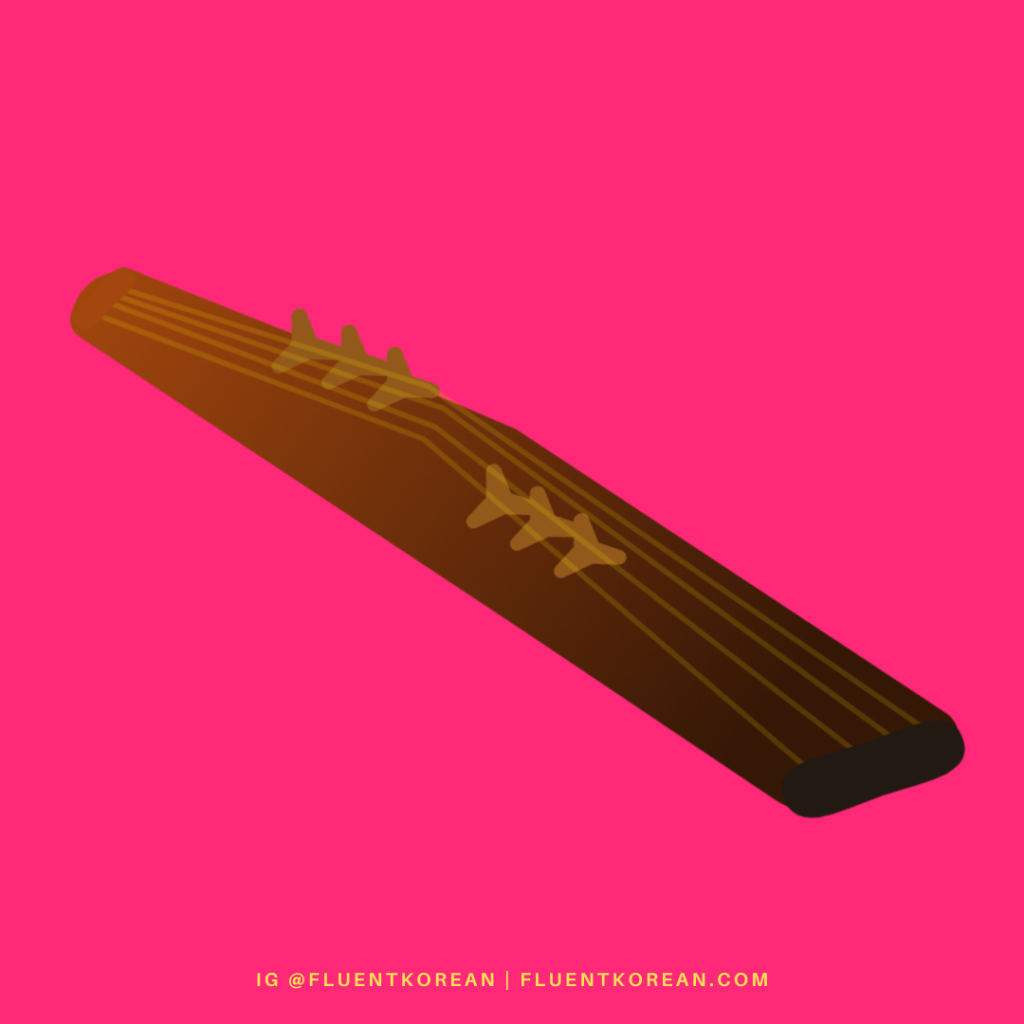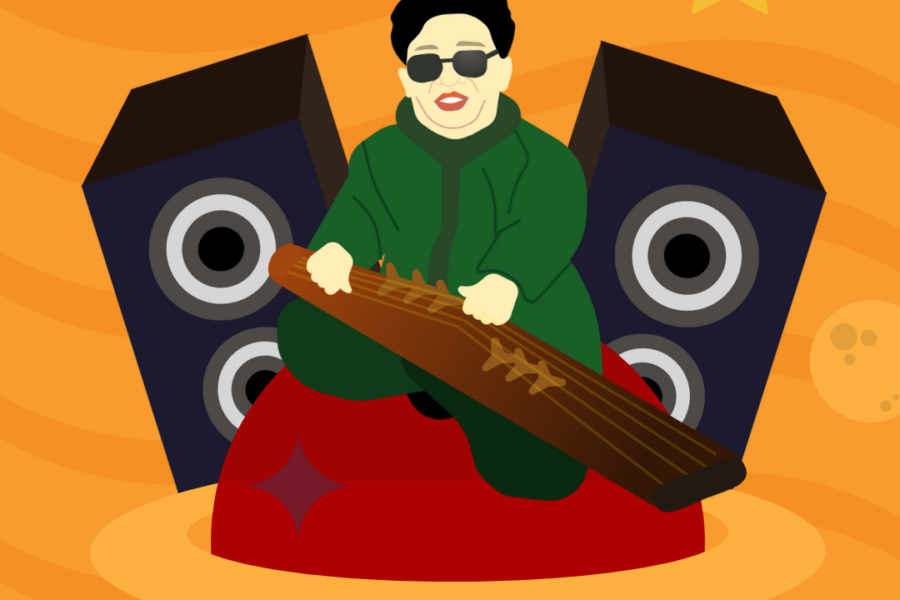
Calling all lovers of traditional Korean music! Learning about traditional Korean music is an amazing way to spend some of the quarantine time at home.
Did you know that the National Gugak Center offers online lessons on traditional Korean music? This 20-module course will teach you the different kinds of traditional Korean music, the backgrounds, the different components and instruments, and how to appreciate the music.
Gugak (국악) means Korean classical, traditional, and folk music.
Aside from being completely free, there is no sign up required. The lessons are in Korean, but they have English subtitles.
How to take the course:

Enter the National Gugak Center’s e-Academy page through the button above. Click on the “View Lessons” button.

A pop-up window will appear. This is where the lessons will take place. Click on the arrow (>) on the left for the menu.

You can navigate through the different modules using the menu. Click the (ENG) button for the English subtitles.
The course consists of 20 modules:
Introduction to Traditional Korean Music
Orientation
1. How to Appreciate Gugak (국악)
- Prologue
- Introduction to Gugak
- Taking Your Pick
- Aimed Appreciation
- Various Ways to Meet Gugak
- Learn More
- Epilogue
2. Korean Culture, Korean Music
- Prologue
- Genres in Korean Music
- Court Music
- Literati and Pungnyu Music
- Types and Characteristics of Folk Music
- Learn More
- Epilogue
3. Jongmyo Jeryeak (종묘 제레악) – Royal Ancestral Shrine Ritual Music
- Prologue
- Musical Characteristics
- Instrumentation of Jongmyo-jeryeak
- Performance of Jongmyo-jeryeak
- Components and Procedures of Jongmyo-jeryeak
- Contents of Jongmyo-jeryeak-jeryeak
- Munmyo-jeryeak
- Learn More
- Epilogue
4. Sujecheon (수제천) – a court music composition originating in Baekjae (7th century) and re-imagined in succeeding dynasties
- Prologue
- Appreciation of Sujecheon
- Musical Elements of Sujecheon
- Former Sujecheon and Present Sujecheon
- Sujecheon Scores and Albums
- Learn More
- Epilogue
5. Daechwita (대취타) and Chwita (취타) – Military Band Music
- Prologue
- Appreciation Points of Daechwita
- Instruments in Daechwita
- Cultural Background of Daechwita Transmission
- Chwita
- Other Processional Music
- Learn More
- Epilogue
6. Yeongsanhoesang (영산회상) – Buddhist Court Music
- Prologue
- The Origin of Yeongsanhoesang
- Types of Yeongsanhoesang
- Musical Structures of Yeongsanhoesang
- Appreciation points of Yeongsanhoesang
- Appreciation of Yeongsanhoesang
- Learn More
- Epilogue
7. Gagok (가곡) – A Genre of Vocal Music
- Prologue
- What is Gagok?
- Due Manners of Singing Gagok
- Modern Gagok Performance
- Appreciation Points of Gagok
- Types of Gagok
- Learn More
- Epilogue
8. Pungnyu: Gasa (가사) – a form of poetry popular during the Joseon Dynasty which were commonly sung
- Prologue
- Types and Themes of Gasa
- Gasa and Gagok
- Appreciation of Eobusa
- Appreciation Points of Gasa
- Learn More
- Epilogue
9. Sijo (Short Classical Lyrical Song)
- Prologue
- Lyrics of Sijo
- Basics and Jangdan (rhythmic cycle) of Sijo
- Types of Sijo
- Appreciation Points of Sijo
- Learn More
- Epilogue
10. How to Appreciate Pansori
- Prologue
- Step 1: Just Listen at First
- Step 2: Read Narratives While Listening
- Step 3: Look into Jangdan
- Step 4: Take a Good Look at the Relations Between Jangdan and Mode
- Learn More
- Epilogue
11. What is Pansori (판소리) – a genre of musical storytelling performed by a singer and a drummer
- Prologue
- The Features of Pansori
- Vocalization of Pansori
- Master Singers of Pansori
- Transmission of Pansori
- Je (Schools) of Pansori
- Learn More
- Epilogue
12. Introduction to Sanjo (산조) – a rhythmic style of music which literally means “scattered melodies”
- Prologue
- Concept and Meaning of Sanjo
- Three Musical Roots of Sanjo
- How to Appreciate Sanjo
- Learn More
- Epilogue
13. Appreciation of Various Sanjo Music
- Prologue
- Kimjukpa-ryu Gayageum Sanjo
- Concept and Types of Schools
- Sanjo by Different Musical Instruments
- Learn More
- Epilogue
14. Danga (단가, Short Prelude Song) and Byeongchang (병창, Singing Accompaniment for Gayageum and Other Instruments)
- Prologue
- Appreciation of Danga & Byeongchang
- Danga
- Byeongchang
- Learn More
- Epilogue
15. Japga I: What is Japga (잡가) – Popular Folk Songs
- Prologue
- What is Japga
- Who Performed Japga
- Seonsori and Anjeunsori
- Jwachang
- Japga and Pansori
- Learn More
- Epilogue
16. Japga II: Seonsori Santaryeong, Namdo Japga, Hwimori Japga
- Prologue
- Seonsori Santaryeong
- Namdo Japga
- Hwimori Japga
- Learn More
- Epilogue
17. Minyo (민요) – Folk Songs and Ballads
- Prologue
- What is Minyo
- Regional Characteristics of Minyo
- Appreciation Resources of Minyo
- Appreciation Points of Minyo
- Learn More
- Epilogue
18. Pungmul (풍물, Instruments for Folk Music) and Binari
- Prologue
- What Pungmulnori Means
- Appreciation of Pungmulnori
- Appreciation of Pungmulnori as a Performance
- Binari
- Learn More
- Epilogue
19. Music and Dance
- Prologue
- Sinawi
- Salpuri
- Chunaengjeon and Pyeongjohoisang
- Learn More
- Epilogue
20. Keywords Helpful to Appreciation of Gugak
- Prologue
- Nonghyeon: The Moving and Continuant Tone
- Sigimsae: the Ornaments that Determines the Flavor of a Tune
- Eodanseongjang: Words are shortened, sound is lengthened.
- Jangin gulgok: Sound is trailed, then bent
- Jeomipgagyeong: Man-Jung-Sak (slow-moderate-fast)
- Hwai budong: Similarly and Differently, Separately and Together
- Learn More
- Epilogue
Aside from this online course on traditional Korean music, the National Gugak Center has a lot of resources and information on Korean music on their website.
Happy learning!


